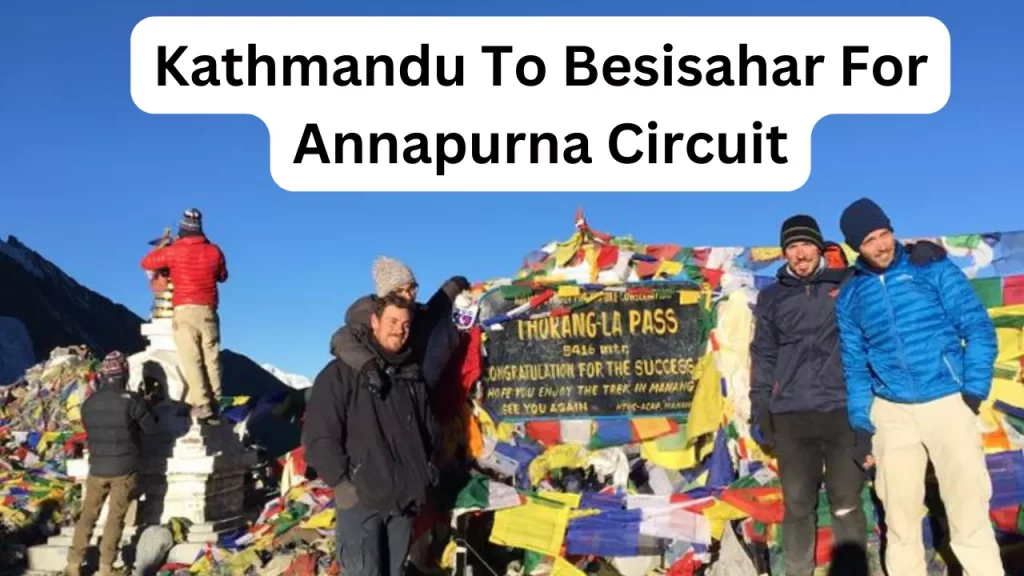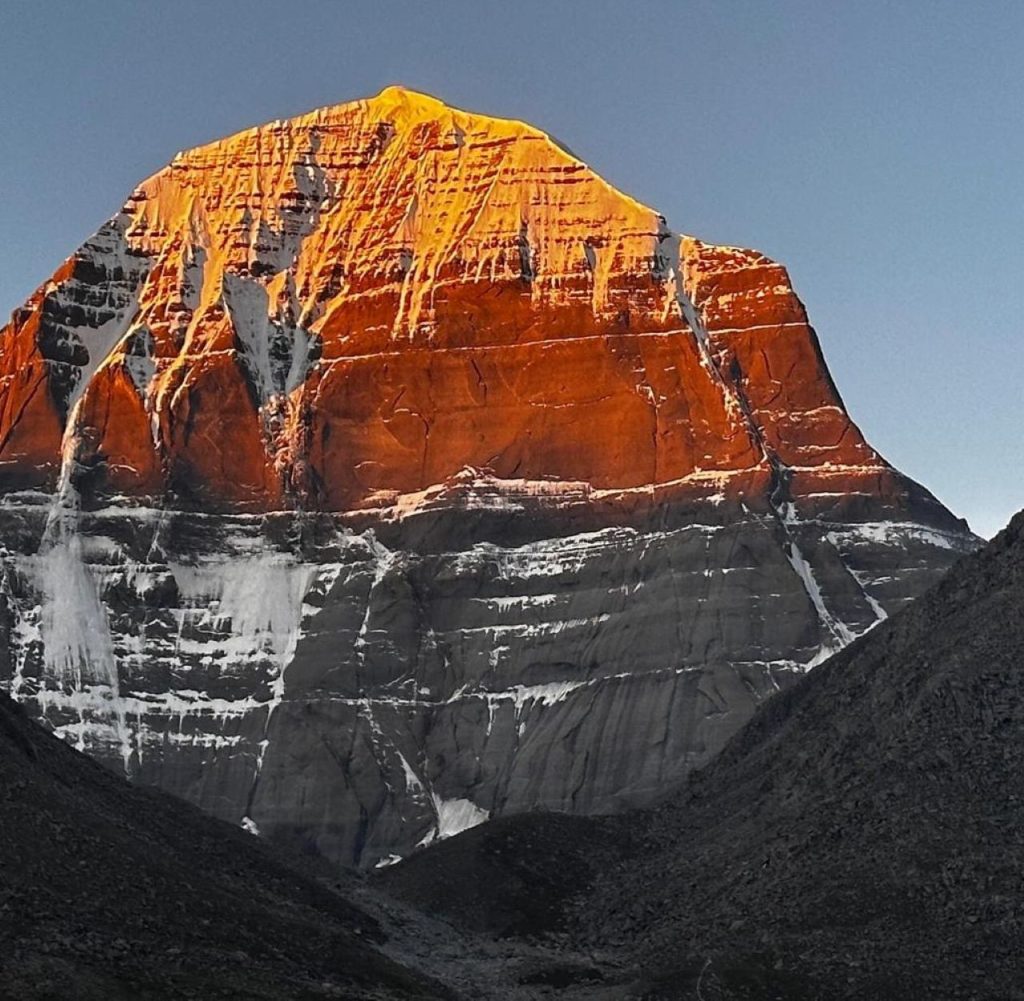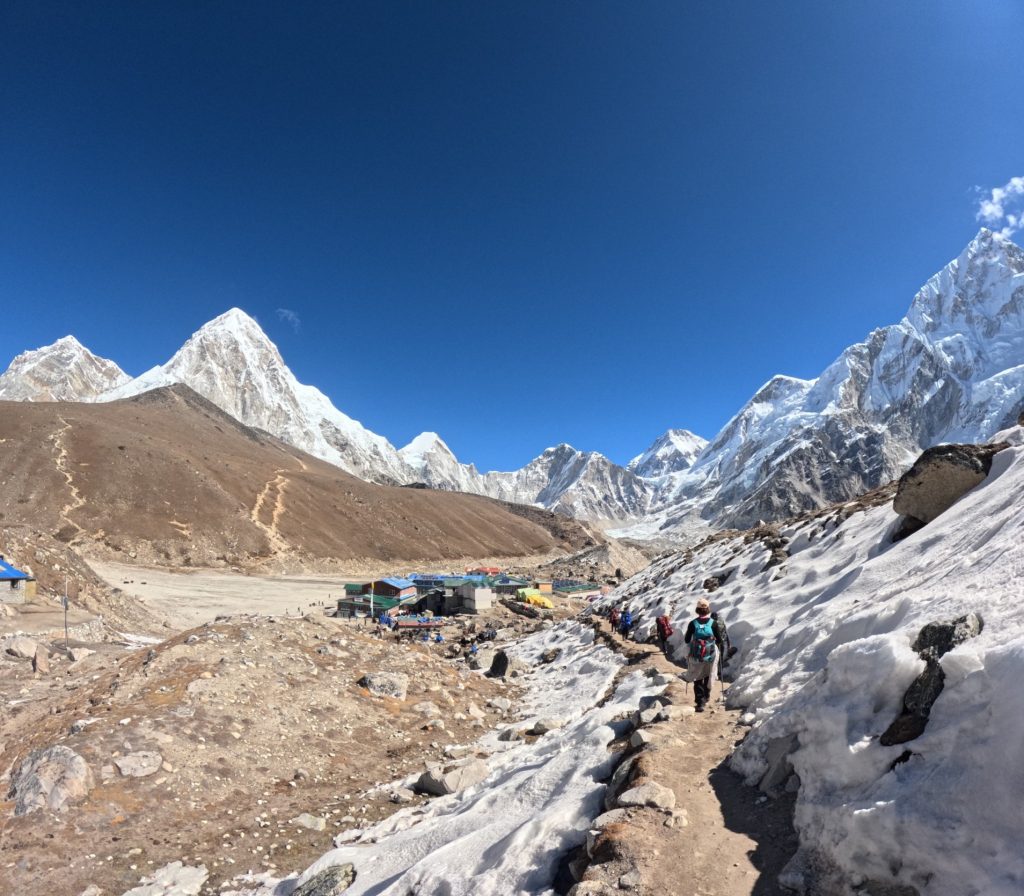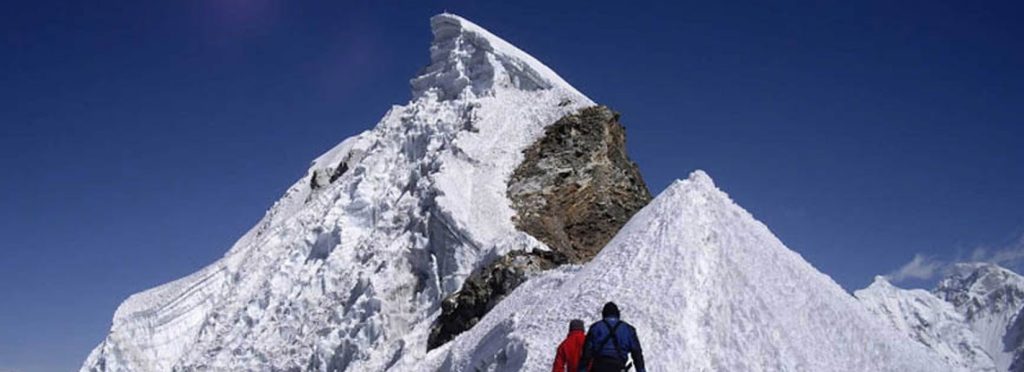
Introduction to Yala Peak Climbing
Yala Peak, standing proudly at an altitude of 5,520 meters (18,110 feet), is a stunning, non-technical trekking peak nestled in Nepal’s Langtang Valley. It forms a part of the magnificent Himalayan range and offers climbers breathtaking views of nearby peaks, including Langtang Lirung, Shishapangma, and Dorje Lakpa.
Unlike many other climbing peaks, Yala Peak does not require prior mountaineering experience, making it an accessible yet rewarding adventure for those looking to step into the world of peak climbing.
The climb to Yala Peak is a harmonious blend of trekking and basic mountaineering. The journey starts with a scenic drive from Kathmandu to Syabrubesi, followed by a captivating trek through lush forests, traditional Tamang villages, and serene alpine meadows. The climb itself is characterized by relatively easy ascents, making it a confidence-building experience for first-time climbers.
Why It’s a Popular Choice for Beginners
Yala Peak is celebrated as one of the best options for novice climbers due to its non-technical nature and moderate altitude, which minimizes risks of severe altitude sickness. The climb does not involve steep ice or rock climbing, and any necessary skills, such as walking with crampons or using an ice axe, can be learned during the expedition itself.
Moreover, the trek to Yala Peak provides an immersive Himalayan experience without the physical and financial demands of higher-altitude peaks.
The affordability of permits and the proximity to Kathmandu make it a convenient choice for climbers who want to combine adventure with cultural exploration. Yala Peak is also an excellent training ground for those aspiring to tackle more challenging peaks in the future.
As part of the Langtang Valley trek, climbers get a chance to explore Langtang National Park, experience the unique Tamang culture, and witness diverse flora and fauna, adding to the overall charm of the expedition.
Ease of Accessibility
Location in Langtang Valley
Yala Peak is located in the picturesque Langtang Valley, a region often referred to as the “Valley of Glaciers.” Nestled in the northern part of Nepal, near the border with Tibet, Langtang Valley is a treasure trove of natural beauty and cultural richness. The valley lies within the Langtang National Park, a UNESCO-recognized area known for its biodiversity, pristine landscapes, and traditional Himalayan villages.
The trail leading to Yala Peak winds through lush rhododendron forests, quaint Tamang settlements, and expansive alpine meadows, offering trekkers a serene and captivating journey.
The peak itself is situated amidst towering Himalayan ranges, providing climbers with a front-row seat to some of the most spectacular mountain vistas in the world. Its location makes Yala Peak a standout destination for those seeking an adventure that combines accessibility with stunning scenery.
Proximity to Kathmandu and Well-Maintained Trekking Routes
One of the major advantages of Yala Peak is its close proximity to Kathmandu, Nepal’s capital. The journey to the starting point of the trek, Syabrubesi, involves a scenic drive of approximately 7-8 hours, making it one of the most easily reachable trekking destinations in the country. This short travel time means that adventurers can embark on a Himalayan climbing experience without the logistical complexities associated with more remote peaks.
The trekking routes in the Langtang Valley are well-maintained and frequently traveled, ensuring a safe and enjoyable experience for climbers of all levels. The trails are marked and pass through several checkpoints, adding a layer of safety for trekkers.
In addition, the presence of teahouses and lodges along the route offers comfortable accommodations and meals, reducing the need for heavy camping equipment.
The accessibility of the region, combined with the manageable duration of the trek (typically 10-12 days), makes Yala Peak an ideal choice for beginners or those with limited time. Its ease of access allows climbers to focus on the thrill of the climb and the beauty of the journey, rather than worrying about logistical challenges.
Non-Technical Climbing Experience
Moderate Altitude of 5,520m
One of the key reasons Yala Peak is ideal for beginners is its moderate altitude of 5,520 meters (18,110 feet).
While this height is substantial enough to offer an authentic mountaineering experience, it is well within the range that most climbers can comfortably handle without advanced technical skills. The altitude is high enough to give climbers a true Himalayan adventure, but not so high that it brings significant risks associated with extreme altitude sickness.
For beginners, climbing at this altitude allows for a gradual acclimatization process. Trekkers have ample time to adjust as they trek up the valley, passing through different altitudes and allowing the body to adapt.
Unlike more challenging peaks, which require complex mountaineering techniques and prolonged exposure to high-altitude conditions, Yala Peak presents a manageable ascent, making it an excellent choice for those taking their first steps into peak climbing.
Equipment Requirements and Basic Training Options
Another reason Yala Peak stands out as a beginner-friendly climb is its simple equipment requirements. The technical gear needed is minimal compared to higher, more demanding peaks. The standard equipment typically includes:
- Crampons: Used to prevent slipping on ice or snow-covered slopes.
- Ice Axe: For stability and balance while walking on snow or ice.
- Helmet: To protect from falling rocks or debris.
- Climbing Harness: To ensure safety when using ropes for sections of the climb.
- Trekking Poles: To assist with balance during the trek.
The good news is that you don’t need to be an expert to use these tools. Basic training on climbing techniques is often included in the guided Yala Peak climbing packages, where experienced guides will teach you how to properly use crampons and an ice axe, and how to navigate snow-covered terrain safely. This on-site training ensures that even first-time climbers can safely tackle the peak with the right preparation.
For those who are unsure about their climbing skills, guided treks provide the reassurance of a trained guide who will help with equipment handling and overall climbing technique. This personalized instruction makes Yala Peak a perfect learning experience for those looking to break into the world of mountaineering while still staying within a safe and manageable environment.
Stunning Views and Scenery
Panoramic Views of Himalayan Peaks
One of the most captivating aspects of climbing Yala Peak is the breathtaking panoramic views it offers. From the summit, trekkers are treated to awe-inspiring vistas of the Langtang Himal, Ganesh Himal, and Langtang Lirung, some of the most iconic peaks in the Nepalese Himalayas. The sight of these towering mountains, their snow-capped summits piercing the clear blue sky, is a reward that makes the climb even more special.
As you ascend, each turn in the trail reveals new perspectives of the surrounding peaks, glaciers, and valleys, making every step more exhilarating. The expansive views provide a constant reminder of the majestic beauty of the Himalayas, leaving climbers with unforgettable memories of their mountaineering adventure. The panoramic vistas from the summit of Yala Peak are often described as one of the best Himalayan views for beginner climbers, offering a sense of accomplishment while still providing a relatively short and manageable climb.
Iconic Landscapes Along the Trekking Route
Before even reaching the summit, climbers are treated to stunning landscapes that define the journey to Yala Peak. The trekking route takes you through dense rhododendron forests, where the colorful flowers bloom in vibrant hues, creating a picturesque setting, especially in spring. As you venture higher, the landscape gradually transforms into alpine meadows dotted with wildflowers and grazing yaks, offering an almost surreal Himalayan experience.
Along the way, trekkers pass through several traditional Tamang villages, where the warm hospitality of the locals provides a stark contrast to the rugged beauty of the mountains. The vibrant prayer flags fluttering in the wind, the charming stone houses, and the serene Tibetan Buddhist monasteries create a unique cultural backdrop that adds depth to the journey. The route also offers stunning views of frozen rivers, glacial moraines, and snow-capped ridges, making each moment spent in the Langtang Valley visually stimulating.
The trek to Yala Peak is not just a physical challenge; it is a journey through some of the most breathtaking landscapes in Nepal. Whether you’re gazing out at the towering peaks from the summit or soaking in the natural beauty along the way, the scenery on Yala Peak is a key part of the allure of this climb.
Affordability of the Climb
Comparative Cost Analysis with Other Beginner-Friendly Peaks
When considering a mountaineering adventure, affordability plays a key role in the decision-making process. Yala Peak is often recognized as one of the most cost-effective peaks for beginners looking to experience Himalayan climbing without breaking the bank.
Compared to other popular beginner-friendly climbs like Island Peak or Mera Peak, Yala Peak is relatively affordable. While these other peaks can have higher costs due to more complex routes, longer durations, or higher permit fees, Yala Peak offers a more budget-friendly option for those wishing to experience the beauty of the Himalayas at a moderate cost. This makes it an excellent choice for trekkers looking to start their mountaineering journey without committing to the higher financial investment often required for more technical climbs.
On average, the total cost for a Yala Peak climb can be significantly lower than its competitors. For example, while Mera Peak expeditions may range from $2,000 to $3,000 (depending on the duration and service level), Yala Peak climbs are usually priced between $1,500 and $2,000. The lower cost does not compromise the experience—trekkers still enjoy professional guiding, good accommodations, and breathtaking views, all while keeping the financial commitment reasonable.
Breakdown of Permits, Accommodation, and Other Expenses
When it comes to the cost breakdown of climbing Yala Peak, the expenses are divided across several essential elements, ensuring that the climb remains affordable without sacrificing quality:
- Permits:
The primary permits required for climbing Yala Peak include the Langtang National Park entry permit and the TIMS (Trekkers’ Information Management System) card. These permits are generally modestly priced, ranging from $30 to $50 for the national park entry and around $10 to $20 for the TIMS card. - Accommodation:
Accommodation during the trek to Yala Peak typically consists of teahouses and lodges in the Langtang Valley. These accommodations are simple but comfortable, providing trekkers with a warm bed and hearty meals. Lodging costs usually range from $5 to $15 per night depending on the altitude and the location. The total accommodation cost for the trek is generally quite affordable. - Guide and Porter Fees:
Hiring a local guide is highly recommended for safety and to enhance the trekking experience. A guide’s fee generally ranges from $25 to $40 per day, while a porter’s fee typically costs around $15 to $25 per day. Guides and porters not only assist with navigation but also help with carrying gear, making the journey more manageable, especially for beginners. - Meals:
Meals in teahouses along the trekking route are reasonably priced, with basic meals such as dal bhat (lentil soup with rice), noodles, or momos (dumplings) costing between $5 and $10 per meal. Higher-altitude teahouses may have slightly higher prices due to the logistical challenges of transporting food, but overall, meal costs remain manageable. - Additional Expenses:
Other potential expenses include equipment rental (such as trekking poles, crampons, and ice axes), which can be rented for approximately $5 to $10 per item per day. If you’re purchasing new equipment, budget a bit more for gear like jackets, boots, and gloves. Travel insurance, which covers trekking and high-altitude activities, is also a vital consideration for climbers, with an average cost of $50 to $100 for a basic policy covering medical emergencies and trip cancellation.
The total cost of a Yala Peak climb, including permits, accommodation, guide fees, meals, and necessary equipment, tends to be relatively affordable for climbers compared to other beginner peaks. While prices can vary depending on the choice of service providers and the trekking season, Yala Peak remains a budget-friendly option for those wishing to experience peak climbing in the Himalayas without significant financial strain.
Cultural Experience Along the Trek
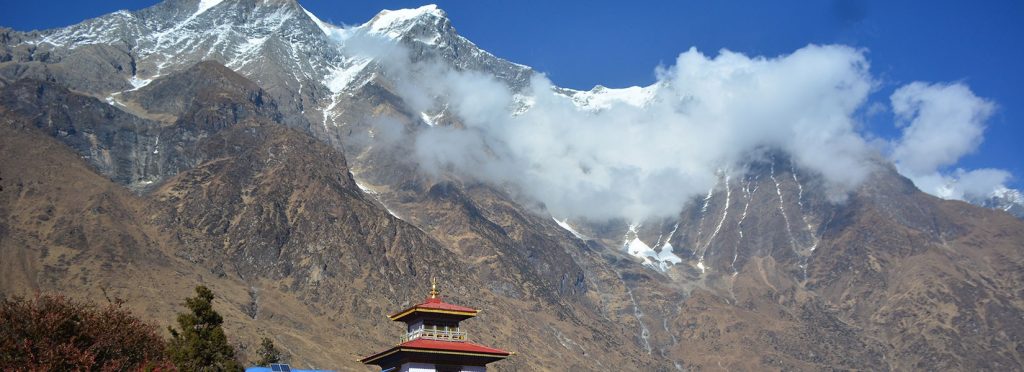
Interaction with Tamang and Tibetan Communities
One of the most enriching aspects of climbing Yala Peak is the opportunity to immerse yourself in the vibrant cultures of the local communities. As you trek through the Langtang Valley, you’ll have the chance to interact with the Tamang people, an ethnic group closely related to the Tibetan population.
The Tamang people, known for their warm hospitality and strong Tibetan Buddhist traditions, offer trekkers a glimpse into their daily lives, customs, and rich heritage. Along the trekking route, you may have the opportunity to engage in conversations, visit local homes, and learn about their traditional farming practices and spiritual beliefs. This cultural exchange is not only a heartwarming experience but also offers a deeper understanding of the region’s history and way of life.
Additionally, you’ll encounter Tibetan Buddhist practices along the trek. Many locals still follow age-old traditions and rituals, adding a unique dimension to your climbing experience. The chance to learn from the Tamang people is an unforgettable part of the Yala Peak journey, offering trekkers an opportunity to witness and appreciate the strength and resilience of these mountain communities.
Local Monasteries and Cultural Immersion
As you continue on your trek, you’ll also pass by several local monasteries that are deeply woven into the cultural fabric of the region. The Kyanjin Gompa monastery, one of the most famous monasteries in the Langtang Valley, is a highlight of the trek. Located at an altitude of 3,800 meters, this monastery offers trekkers a peaceful and spiritual environment amidst the grandeur of the Himalayas.
The serene atmosphere of the monasteries and the chanting of monks create a peaceful backdrop, inviting climbers to take a moment for reflection. In many cases, you may even have the opportunity to witness traditional Buddhist ceremonies, offering a truly immersive cultural experience. These moments provide a powerful connection to the land, the people, and their spiritual beliefs.
Furthermore, the trek offers a chance to engage in local festivals if your timing aligns with the Nepali lunar calendar. During these festivals, such as Lhosar (Tibetan New Year), you may have the opportunity to witness dance, music, and traditional rituals, further deepening your cultural experience in the region.
The cultural journey along the trek is as significant as the physical one, offering a chance to witness the unique way of life of the Tamang people and the Tibetan Buddhist influence that permeates the valley. This cultural immersion adds a special dimension to your Yala Peak climbing adventure, making it a truly holistic experience for both nature enthusiasts and cultural explorers.
Beginner-Friendly Training Opportunities
Acclimatization Hikes to Prepare for Altitude
One of the key aspects that make Yala Peak climbing ideal for beginners is the focus on proper acclimatization. As part of the trekking itinerary, climbers will have the chance to undertake acclimatization hikes, which are specifically designed to help your body gradually adjust to the higher altitudes.
Acclimatization is crucial for preventing altitude sickness, and Yala Peak’s moderate elevation of 5,520 meters makes this an essential part of the journey. As you trek through the Langtang Valley, you’ll engage in hikes to Kyanjin Gompa and other nearby areas, which will help your body adapt to the altitude before tackling the summit. These hikes not only enhance your physical preparation but also allow you to experience the stunning landscapes and get familiar with the mountain terrain.
These acclimatization hikes are paced in such a way that they give you enough time to rest, drink plenty of fluids, and take in the surrounding beauty—ultimately ensuring you’re well-prepared for the final push to the summit. The focus is always on gradual ascent and rest days to give your body the best chance to adjust naturally to the altitude, reducing the risk of altitude-related issues.
Basic Climbing Skills Taught by Professional Guides
Although Yala Peak is a non-technical climb, many beginners may not have experience with high-altitude climbing or using technical equipment. To help bridge this gap, professional guides provide essential training on basic climbing skills.
Before the final ascent, trekkers will be given instruction on how to use crampons, ice axes, and ropes, as well as proper mountaineering techniques such as walking on snow and ice. These sessions are specifically tailored for those with little to no previous experience in peak climbing, ensuring that everyone is comfortable and confident before reaching the summit.
Guides will also educate climbers on the importance of safety procedures, correct body posture, and how to navigate steep sections of the climb. Their expertise ensures that every beginner has the right skills to climb safely and enjoy the experience to the fullest. The level of personal attention and hands-on training makes it accessible for anyone, regardless of experience level.
For many trekkers, these training sessions are one of the highlights of their journey, as they empower beginners with the skills and knowledge needed for future climbs and mountain adventures. Whether it’s mastering the basics of rope work or simply gaining confidence on rocky or icy surfaces, the opportunity to learn from experienced guides significantly enhances the overall experience.
Safety and Support System
Guided Expeditions with Experienced Sherpas
When it comes to peak climbing in Nepal, safety is paramount, and Yala Peak is no exception. One of the key reasons why Yala Peak is ideal for beginners is the presence of experienced Sherpas who serve as guides throughout the trek.
Sherpas are known for their extensive experience in the mountains and their deep knowledge of the terrain, weather patterns, and climbing techniques. As native to the Himalayas, they possess invaluable insight into ensuring the safety of all trekkers. On a Yala Peak climb, each expedition is led by these seasoned professionals, who not only offer guidance on how to tackle the climb but also provide support and reassurance in challenging conditions.
Having Sherpas on your team means you’re never alone—these guides are with you every step of the way, helping with navigation, managing difficult sections of the trek, and offering valuable tips for staying safe in high-altitude environments. Their expertise is particularly crucial for beginner climbers, as they can anticipate potential hazards and offer solutions, making the climb as safe and comfortable as possible.
Emphasis on Safety Measures and Medical Preparedness
While Yala Peak is known for its moderate difficulty, safety remains a primary focus throughout the expedition. The trek is designed to be safe for beginners, but it still presents challenges, especially at higher altitudes, so it’s essential that every part of the journey is approached with caution.
To ensure the highest standards of safety, the climbing expeditions prioritize thorough medical preparedness. Trained guides and Sherpas carry essential medical kits with basic first-aid supplies, and the team is equipped to manage common altitude-related issues, such as acute mountain sickness (AMS). Additionally, most trekking companies include access to emergency evacuation services in case of serious health concerns or accidents.
The safety measures also include regular check-ups to monitor your well-being, with an emphasis on hydration and maintaining energy levels. Altitude sickness is a common concern at elevations like Yala Peak’s 5,520 meters, but the guided expeditions ensure that trekkers have access to proper acclimatization and rest periods.
Furthermore, communication systems such as satellite phones are in place for emergencies, ensuring that you remain connected with your base camp and support team at all times.
These safety measures combined with professional guides, Sherpa support, and medical preparedness provide peace of mind for climbers, allowing them to focus on enjoying the stunning landscapes and the experience of summiting Yala Peak.
Langtang Valley’s Highlights

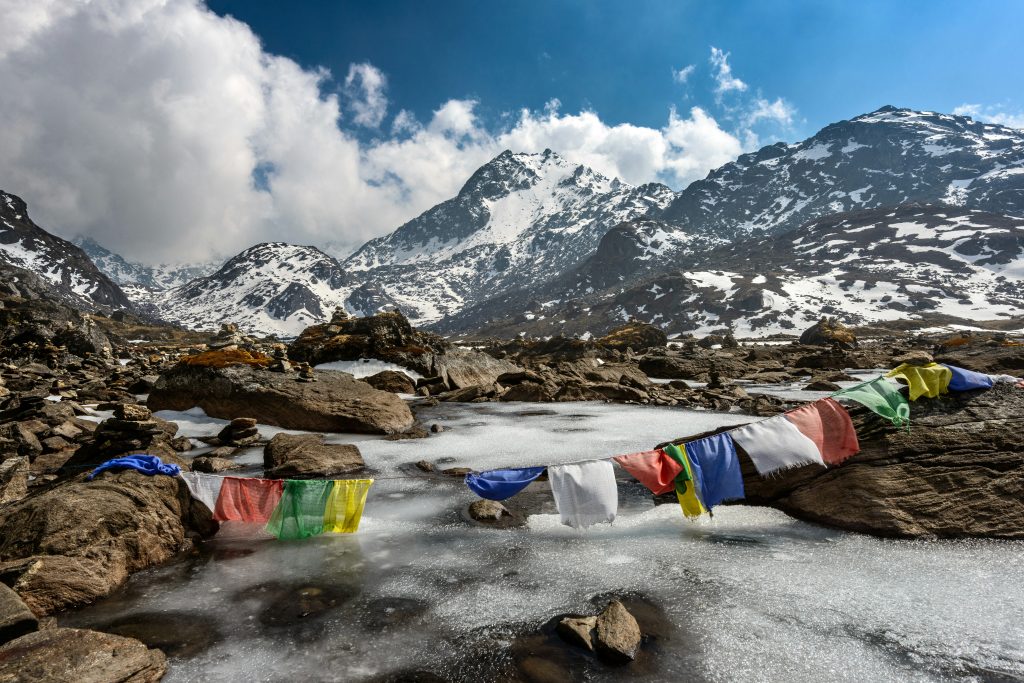
Explore Langtang National Park and Its Biodiversity
One of the most remarkable aspects of Yala Peak Climbing is the opportunity to explore the Langtang Valley, which is renowned for its stunning natural beauty and rich biodiversity. The trek takes you through Langtang National Park, one of Nepal’s oldest protected areas, home to a wide variety of flora and fauna.
As you make your way through the valley, you’ll experience an ever-changing landscape—from dense forests of rhododendrons and oak trees to alpine meadows dotted with wildflowers. The park is also a sanctuary for wildlife such as red pandas, Tibetan wolves, and Himalayan tahr. Birdwatchers will appreciate the park’s vast array of species, including the Himalayan griffon vulture and golden eagles.
For nature lovers, the Langtang National Park provides an unforgettable experience, allowing you to witness Nepal’s stunning mountain ecosystems up close while also promoting conservation efforts to protect these fragile environments.
Additional Trekking Options and Sightseeing in the Area
While Yala Peak offers a fantastic climbing experience, the Langtang Valley is rich in additional trekking opportunities and sightseeing destinations that make it a must-visit for adventure enthusiasts.
If you’re looking to extend your adventure, consider adding some of these incredible trekking options to your itinerary:
- Langtang Valley Trek: This is the classic trek through the valley, where trekkers can explore remote villages like Kyanjin Gompa and take in views of towering peaks such as Langtang Lirung (7,227m). The trek is perfect for those who wish to immerse themselves in the valley’s unique culture and pristine landscapes.
- Gosaikunda Lake Trek: For those with a bit more time, the Gosaikunda Lake Trek offers a stunning high-altitude route that leads to the sacred Gosaikunda Lake, surrounded by snow-capped mountains. It’s an important religious site for Hindus and offers an unforgettable trekking experience.
- Helambu Trek: Another option for those seeking a cultural experience is the Helambu Trek, which explores villages inhabited by the Hyolmo people, offering an insight into the local Tibetan-influenced culture and spectacular views of the Langtang range.
Aside from trekking, the Langtang region offers several cultural and scenic gems:
- Kyanjin Gompa: A Tibetan Buddhist monastery located at the base of Langtang Lirung. It’s a serene place to reflect on your journey and enjoy panoramic views of the surrounding peaks.
- Tamang Villages: Interacting with the Tamang people who reside in the region provides a rich cultural experience. Their Tibetan Buddhist traditions and traditional houses create a fascinating contrast to the natural surroundings.
For those looking to blend nature, adventure, and cultural exploration, Langtang Valley offers endless opportunities to immerse yourself in the heart of the Himalayas.
Why Choose Third Eye Adventure for Yala Peak Climbing
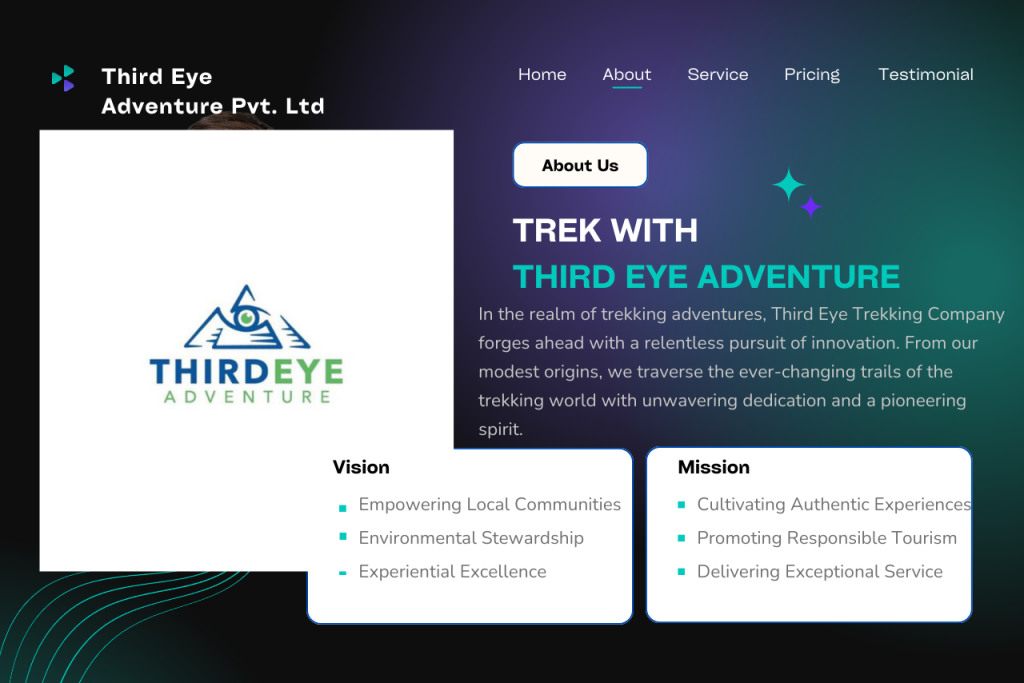
Unique Features of Third Eye Adventure’s Packages
When it comes to Yala Peak Climbing, Third Eye Adventure offers a unique blend of expertise, professionalism, and personalized services that ensure a safe, enjoyable, and memorable experience. We specialize in providing tailored climbing packages that cater to the needs of beginners while maintaining a strong emphasis on safety, comfort, and cultural immersion.
Some of the standout features of our Yala Peak Climbing packages include:
- Experienced Guides and Sherpas: Our team consists of highly skilled Sherpas and professional climbing guides with extensive experience in guiding trekkers through the Himalayas. They provide support at every step, ensuring your safety and offering valuable insights into the local culture and environment.
- Comprehensive Support System: From pre-trip training to medical preparedness, we ensure that you’re fully prepared for the climb. Our team carries essential equipment, first-aid kits, and other necessities to guarantee your well-being throughout the expedition.
- Customized Itineraries: Understanding that each climber has different needs, we offer flexible itineraries that allow for proper acclimatization and rest, ensuring you are physically ready for the peak climb.
- Comfortable Accommodations: We ensure that our climbers are well taken care of, offering comfortable lodges and teahouses with modern amenities along the trekking route, while maintaining the authenticity of the experience.
- Cultural Immersion: Along with the peak climb, we provide opportunities for trekkers to engage with local communities, visit Tibetan Buddhist monasteries, and explore the rich cultural heritage of the Langtang Valley.
At Third Eye Adventure, we focus on delivering not just a climb, but an experience of a lifetime that blends adventure, culture, and nature seamlessly.
Testimonials from Successful Beginners
Our climbers’ success stories speak volumes about our commitment to providing a safe and enjoyable climbing experience. Here are a few testimonials from beginners who have completed Yala Peak Climbing with us:
- “I had never climbed a peak before, but with Third Eye Adventure’s team, I felt completely supported throughout the entire process. The guides were incredibly knowledgeable and helped me build my confidence step by step. Reaching the summit of Yala Peak was one of the most rewarding experiences of my life!” – Suman, Nepal
- “What I appreciated most was the attention to safety and the well-planned itinerary. The acclimatization hikes were incredibly helpful, and I never felt rushed. I highly recommend Third Eye Adventure for anyone looking to climb Yala Peak!” – Sarah, USA
- “The combination of expert guidance and cultural immersion made this climb truly special. Not only did I climb Yala Peak, but I also got to experience the stunning Langtang Valley and its incredible people. It was more than just a trek; it was a journey!” – Raj, India
These testimonials highlight the success of our beginner-friendly approach and our dedication to providing a supportive and memorable climbing experience.
FAQs about Yala Peak Climbing
What is the best time to climb Yala Peak?
The best time to climb Yala Peak is during the pre-monsoon (March to May) and post-monsoon (September to November) seasons. During these periods, the weather is stable, and the views of the Himalayan peaks are clear. These months offer the best conditions for trekking and climbing.
How difficult is Yala Peak for beginners?
Yala Peak is considered moderately challenging, making it ideal for beginners. The non-technical climb and relatively moderate altitude (5,520m) ensure that trekkers with basic fitness levels can summit the peak with proper acclimatization and training.
Do I need prior climbing experience for Yala Peak?
No prior climbing experience is necessary. Yala Peak is a beginner-friendly climb that requires only basic trekking skills and the willingness to learn. Third Eye Adventure provides basic climbing training and guidance along the way.
What equipment do I need for Yala Peak Climbing?
Essential climbing equipment for Yala Peak includes warm clothing, trekking boots, climbing boots, ice axe, crampons, and a helmet. Additional gear like sleeping bags, trekking poles, and headlamps will be provided by the expedition organizers.
How long is the Yala Peak climbing trek?
The trek typically lasts 10-12 days, including acclimatization days, trekking to base camp, and the final summit push. The itinerary is carefully planned to ensure proper acclimatization to the altitude.
What are the chances of altitude sickness on Yala Peak?
While Yala Peak is a moderate-altitude climb, there is still a risk of altitude sickness. To minimize the risk, Third Eye Adventure ensures proper acclimatization with gradual ascent and rest days. Our experienced guides monitor your health closely during the trek.
How much does it cost to climb Yala Peak?
The cost for Yala Peak climbing typically ranges between $1,500 to $2,500, depending on the package you choose. This includes trekking permits, guide services, accommodation, meals, and transportation from Kathmandu to the trailhead.
Is it safe to climb Yala Peak?
Yes, Yala Peak is considered safe for beginners when proper precautions are taken. Third Eye Adventure emphasizes safety measures, including experienced guides, medical kits, and a strong support system throughout the journey. Our guides are trained in first aid and ensure that all necessary safety protocols are followed.
How do I prepare for Yala Peak climbing?
To prepare for the climb, focus on building stamina, improving cardiovascular fitness, and doing hiking or trekking on moderate altitudes. We also recommend engaging in strength training and endurance exercises to prepare for the physically demanding days of trekking.
Can I extend my trip after climbing Yala Peak?
Absolutely! After summiting Yala Peak, you can explore other regions of Langtang National Park, such as Kyanjin Gompa, or even opt for a Langtang Valley trek. Our guides will help you plan additional activities if you wish to extend your adventure.
What is included in the Yala Peak climbing package?
Our Yala Peak climbing package includes guides, Sherpas, permits, accommodation, meals, and transportation. Additional items like climbing gear can be rented if needed, and we provide support throughout the entire climb.
What should I carry for the trek?
Pack light but essential gear including trekking clothes, a first aid kit, sun protection, headlamp, camera, and any personal medication. Ensure to carry waterproof gear, especially during the rainy season.
Can I climb Yala Peak solo?
While it is possible to trek in Nepal solo, climbing Yala Peak is recommended with an experienced guide or as part of an organized expedition. Trekking with a guide ensures safety, navigation, and support during the climb.
What makes Third Eye Adventure’s Yala Peak package different from others?
Third Eye Adventure stands out for its personalized itineraries, dedicated support system, and focus on safety. We provide comprehensive training, well-maintained accommodation, and local cultural experiences that enhance your climbing journey.
Is there a chance to interact with local communities during the trek?
Yes! Along the trekking route, you will have the chance to meet the Tamang and Tibetan communities. You can visit local monasteries, learn about their customs, and gain insight into the unique way of life in the Langtang Valley.


